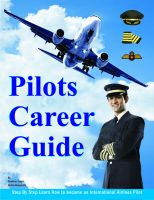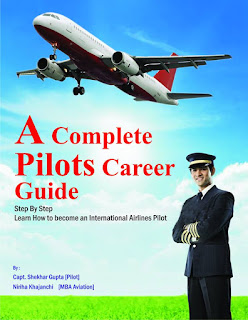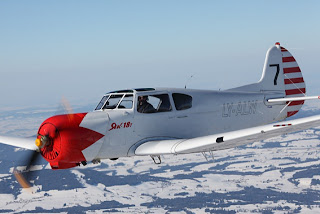Amsterdam Airport Schiphol (Dutch: Luchthaven Schiphol) (IATA: AMS, ICAO: EHAM) is the Netherlands' main international airport, located 9.1 km (5.6 miles) southwest of Amsterdam, in the municipality of Haarlemmermeer.
The airport's official English name, Amsterdam Airport Schiphol, reflects the original Dutch word order (Luchthaven Schiphol).
The airport used to have the IATA code of SPL, which has fallen into disuse and has been replaced by AMS
The airport is the primary hub for KLM as well as for Arkefly, Corendon Dutch Airlines, Martinair (freight), and Transavia.
The airport also serves as a European hub for Delta Air Lines and as a base for Vueling. Schiphol is considered to be an Airport City.
The biggest and busiest airport in the Netherlands is Schiphol Airport just 14km outside Amsterdam. It is also one of the major European
airport transit hubs efficiently handling over 40 million business and tourist passengers per year. The Dutch national airline, KLM,
is based there and is the largest airline group in the world. Over 100 other airlines fly into Schiphol too, among them over twenty budget
airlines offering cheap flights from many European countries.
Amsterdam Airport Schiphol (airport code AMS) is located just 14 kilometers southwest of this capital city. Schiphol Airport has one terminal,
which is divided into six piers (B through G) extending out from a central plaza. From Schiphol passengers can hop a 20-minute Direct Rail Link
train to Amsterdam's Centraal Station and then connect to trains traveling throughout the Netherlands and into Germany and Belgium. From canals to coffee,
Amsterdam is a relaxing city with few cars because the residents either walk or ride bikes. Strolling can be an outdoor activity along the tree-lined streets
or indoor at one of the city's many famous art museums. Schiphol Airport is a destination unto itself because of its open-air promenade and observation deck
on top of the terminal building and the mini-Rijksmuseum featuring a permanent collection of the 17th Century Dutch Masters located on Holland Boulevard,
between Piers E and F.
Amsterdam Airport facilities
Schiphol Airport has three terminals, all located in a single passenger terminal building, making it very convenient for passengers to navigate.
Efficient signposting in text and symbols guides passengers from the moment they enter the terminal, and ground staff are generally extremely courteous.
There are many special facilities for disabled travellers, and transportation can be requested to help cover the large distances to the departure gate.
Air travel involves a lot of waiting, but there is plenty to keep you busy. As well as shopping, choose from restaurants serving everything from burgers to sushi.
There are two Holland Casino venues, and communication centres in departure lounges one and two, as well as wi-fi in several locations. You can find the childrens’
play areas located between gates E and F. The staff at Schiphol Airport try to make travel as stress fee as possible; here we’ve compiled more useful tips and
advice to help your journey to or from Amsterdam Schiphol Airport run smoothly.
Amsterdam Airport arrival
As Schiphol Airport is so close to the city centre, there are several ways to get quickly from the Airport into Amsterdam. On leaving the
baggage reclaim area, you enter Schiphol Plaza, and you can follow the sign posts to find the trains, taxis, shuttle buses and car rental.
Train is the cheapest and perhaps the most convenient. They run 24 hours a day and take about 15 minutes. Train tickets can be bought at
ticket counters or the yellow ticket vending machines in Schiphol Plaza. Taxis are located in the rank just outside Schiphol Plaza. Some
hotels provide their own free airport shuttle bus, but there is also the Conexxion Hotel shuttle bus that services 100 city hotels.
It runs between 6.00a.m. and 21.00 p.m. All the major car rental companies have offices in Schiphol Plaza. You can chose from Avis,
Budget, Europcar, Hertz, National Alamo and Sixt. We partner with Dutch Business Limousine, offering you a convenient and luxurious
way to get to your destination for a very reasonable price. You can book the transfer service via this site.
Amsterdam Airport departure
Leaving the Netherlands will be fairly stress free. The excellent transport infrastructure means that Schiphol Airport is within easy
reach of not only the city of Amsterdam but also practically the whole of the country. Again the train service is the most convenient,
but taxi drivers always ask which airline you are flying with to ensure they drop you off at the correct departure gate, the shuttle buses
run very frequently, and the car hire drop off points are close to the Airport terminal. Security checks at Schiphol Airport are strict however
so remember to allow the time for those too.
Amsterdam Airport parking
There are both long and short term parking facilities at Schiphol Airport. If you are dropping off departing passengers you can use the free drop off
zone in front of the terminal. When going on a holiday break, the cheap open-air long-stay car parks provide a free shuttle bus service to the departure halls.
The short-stay car parking close to the terminal building is the most expensive. Parking fees can be paid in cash, by credit card or special payment cards.
Amsterdam Airport duty free shopping
Schiphol Airport’s duty free shopping facilities are among the best in the world. Once you reach the departure lounges, you will have time to browse at your
leisure for not only perfumes, liquor and tobacco but souvenirs, cosmetics, fashion, jewellery, books and newest technological gadgets. Prices are very reasonable too,
with regular special offers and discounts.
Amsterdam Airport for visitors
Schiphol is not just an international airport; it can be classed as a tourist attraction all by itself. If you are there to meet an arriving passenger take the time
to explore the Schiphol Plaza. This commercial centre is open seven days a week and offers a great shopping experience, as well plenty of food and beverage outlets.
There is also a huge open-air observation deck on top of the passenger terminal building with fantastic views of this busy airport. You can even visit the national
aviation museum Aviodome signposted on the approach to the airport. In cooperation with the Rijksmuseum there is an art gallery displaying the masterpieces at the airport.
Location:
Amsterdam NL
Latitude / Longitude:
52.30907 / 4.763385
Airport Code:
FlightStats code: AMS
IATA code: AMS
ICAO code: EHAM
FAA code:
Airport AMS, Schiphol Airport Code, Schiphol Netherlands, Amsterdam Airport Information, Amsterdam International Airport, citizenM Schiphol Amsterdam Airport, Flights to Amsterdam Airport Schiphol, Car-Rental Amsterdam Schiphol Airport
Niriha Khajanchi



























.jpeg)
.jpeg)
.jpeg)
.jpeg)





















